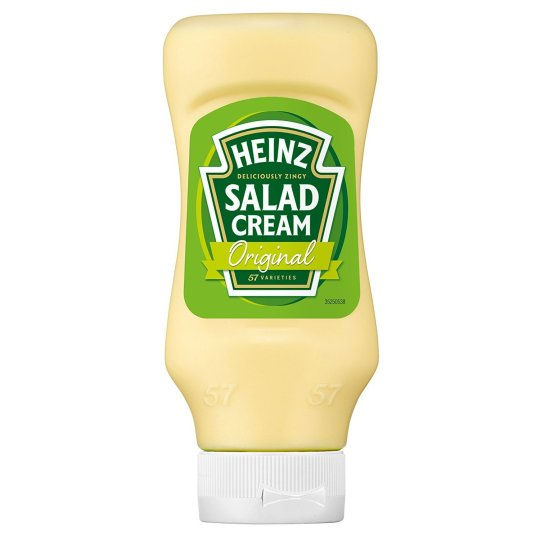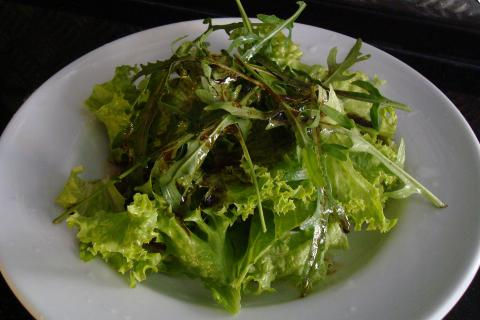The evolution of green salad
- rosemarydearman1
- May 11, 2019
- 7 min read
"Dressed in light-stepping vinaigrette, the right ratios of quietly explosive herbs and cooling, peppery or bitter leaves can create an interplay of refreshing, summery flavours that dance across the palate with a balletic energy and grace." Tony Naylor - The Guardian

For some reason I thought I would be able to do a fairly simple post on salad in general and how it has changed over time, but, of course, as soon as I started looking into it I realised this was too much. So I am sticking to green salad. And you can go on for quite a long time on that too. For to quote myself in one of the cookery books I gave my children: "I thought it was interesting, how gurus often expend most effort on the simplest things."
Where to begin? Well perhaps in my childhood. I was never a huge fan of salad. It was a bit too plain for me. And it was restricted to being a summer dish too. Generally the salads we had at home consisted mostly of lettuce, with perhaps some cucumber and tomato, maybe, if there was any available, some radish. And this salad was dressed with - oh the horror - just malt vinegar and a sprinkling of sugar perhaps. I don't think we had salad cream much or maybe we used that on potato salad. I think we had potato salad but that's another thing entirely.

So a brief digression on to salad cream. What is salad cream you may ask if you are not English. "One of the major culinary disasters of this country" says Elizabeth David, but then she would. Actually I don't think I ever liked it either but it was ubiquitous and it was made by Heinz and it still is. It's efforts to (a) cease making it altogether, and (b) renaming it to sandwich cream have been comprehensively defeated by the British public and press. I gather that it continues to be made as salad cream and is even going to undergo 'exciting development'. What it is, is a salad dressing sort of similar to mayonnaise - the ingredients are basically the same, but the proportion of vinegar is much higher in salad cream and it is therefore much tangier - which one commentator remarked was more to the British taste, along with their love of pickles, chutneys and vinegar on their fish and chips.
Our family conversion to vinaigrette and plain green salads, was instigated by my trips to France. Like the tomato salad I have mentioned before, green salad was perhaps the main foodie thing that I brought back to my home. Every evening I would watch Mr. Coutant (yes Monsieur - Madame would be cooking the rest of the meal) make the salad dressing. Now I can only with certainty describe how he would carefully chop garlic into tiny pieces to go into the dressing. But I cannot remember whether he used olive oil or some other oil, or whether there was mustard and/or sugar in the mix. I think he used red wine vinegar, not white. I am guessing that because I add mustard to my vinaigrette, then he must have, and that perhaps I omitted the sugar, apparently because I am English, I like the sharper taste of the dressing without it. But I did bring the recipe back home, and ever after this is how we dressed a green salad. And the other main thing I remember of course, is that the salad was served separately after the main dish and before the cheese. It was sort of a palate cleanser.
"On a recent visit to Paris, I was reminded of why, for all their fondness for le Big Mac, and hypermarkets the size of Wales, the French can still teach us a thing or two about good food. My epiphany came in the form of a simple side salad – no micro herbs or heirloom radishes here – dressed with the most perfect of vinaigrettes. Each lightly coated leaf was a delicate essay in culinary restraint. The kick of the vinegar, the heat of the mustard, the seasoning – all so finely balanced I wanted to weep." Felicity Cloake
Exactly. And to this day we have a green salad after our main dish almost every day. It was one of the first things I taught my children to make.

“In the composure of a salad, every plant should come in to bear its part, without being overpowered by some herb of a stronger taste ... but fall into their places, like the notes in music, in which there should be nothing harsh or grating.” John Evelyn (17th century)
You can argue for ages over what salad greens to use, but I actually think that this is a personal thing. I like iceberg lettuce - I find it crisp and tasty, but I know that most gourmets pour scorn on it. Rocket is nice, endive is nice, cos is nice, but I'm not a huge fan of the floppier kinds that others adore. So I'm with Jane Grigson on this one.
"The first important ingredient is the lettuce. It should be crisp (avoid winter lettuces, flopping heartlessly in polythene bags, and use endive instead), a lettuce of substance, of character, such as Webb’s Wonder (Iceberg) or long-headed Cos. Wash, shake dry and pull apart." Jane Grigson
I was ahead of Elizabeth David in bringing French style green salads back to England, but I cannot leave out her preachy words on the subject, because she was probably the person who actually persuaded the English to the French style of salad. This is very long, but tells you very precisely how to 'do it'.
“It seems to me that there are only three absolutely essential rules to be observed: the lettuce must be very fresh; the vinegar in the dressing must be reduced to the absolute minimum’ the dressing must be mixed with the lettuce only at the moment of serving. Wash the lettuce. (Ideally of course it should not be washed at all, but each leaf wiped with a clean damp cloth,) under a running cold tap; don’t leave it to soak. Drain it in a wire salad basket, or a colander, or shake it in a clean teacloth in which it can then be hung up to dry; or it can be put, still wrapped in its cloth, into a refrigerator until half an hour before it is to be served (don’t put a freshly picked garden lettuce in the refrigerator, but it will do no harm to the average bought lettuce). The salad dressing can be prepared beforehand, and when it is time to mix the salad, do it gently, taking your time, and ensuring that each leaf has its proper coating of oil. The most effective way of mixing a green salad is with your hands.
The French dressing most commonly used consists of 3 parts oil to 1 of vinegar, but to my mind this is far too vinegary, and I seldom use less than 6 times as much oil as vinegar. Tarragon-flavoured wine vinegar makes the best dressing. First-class olive oil is of course essential, and given this, the flavour of the lettuce and the oil, with a little salt and garlic, is quite enough to make a perfect salad without any further seasoning. The grotesque prudishness and archness with which garlic is treated in this country has led to the superstition that rubbing the bowl with it before putting the salad in gives sufficient flavour. It rather depends whether you are going to eat the bowl or the salad. If you like the taste of garlic but don’t actually wish to chew the bulb itself, crush it with the point of a knife (there is really no necessity to fuss about with garlic presses and such devices unless you wish to intensify and concentrate the acrid-tasting oils in the garlic instead of dispersing them), put it in the bowl in which the dressing is to be mixed, add the other ingredients and stir vigorously. Leave it to stand for an hour and by that time the garlic will have flavoured the oil, and it can be left behind when the dressing is poured on to the salad. ...” Elizabeth David
It seems to me that the proportion of oil to vinegar is one of the most contentious things - people vary. Me - I think I am in the 3 to 1 camp. And I do use a garlic press I'm afraid. I don't wash my lettuce either, unless it's from the garden or if it's one of those hydroponic lettuces, that tend to have a lot of dirt on them. And I add mustard and pepper to add a touch of spice and also to emulsify the wine and vinegar. No sugar or salt though.
These days however, it is rare that you get a simple green salad. Even a 'simple green salad' is rarely simple. Here are a few examples to show you what I mean. From the left - a simple green salad - that's what it was called with all manner of other things in it. Two from Nigel Slater - one with parmesan and pancetta - so very, very of today, and one with noodles and bean sprouts. Then on the bottom row Gourmet Traveller gives us Chopped Spring Green Salad, which is green in colour but includes feta cheese and various kinds of peas. it's not a green leaf salad. The middle one is from Better Homes and Gardens and includes oh so fashionable avocado and the last is from Donna Hay - Lettuce and Cucumber Salad. She is the queen of simple, but even she can't resist adding cheese and cucumber.
I guess part of this evolution might be an increased availability of different kinds of greens and herbs - I didn't even include kale - or more positively it's a keener interest in experimenting and innovation. But we have indeed come a long way from cos lettuce dressed with malt vinegar and sugar, or no dressing at all. Or are we just hiding the delicate flavour of lettuce beneath a plethora of tricksy dressings?
“A handful of lettuce leaves contains negligible nutritive benefit; the dressing adds nothing beyond lubrication. The whole is designed as a salve to the conscience, not a joy to the palate.” Tim Hayward - Financial Times
Now there's a contrary view.
























Comments